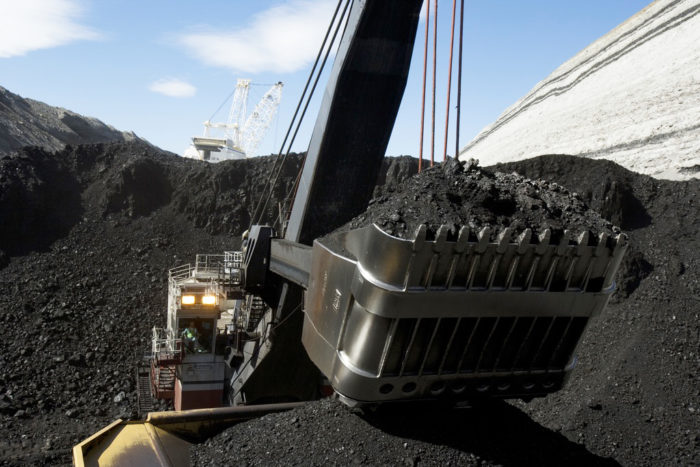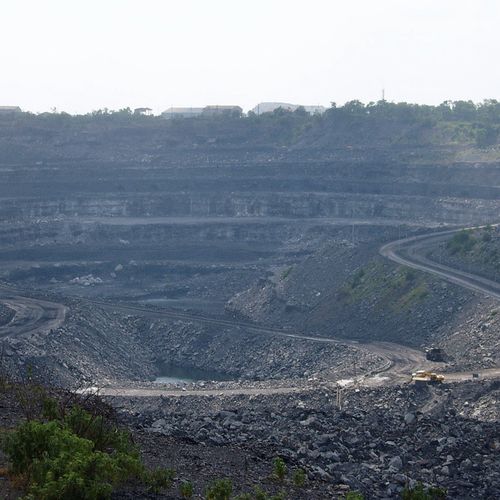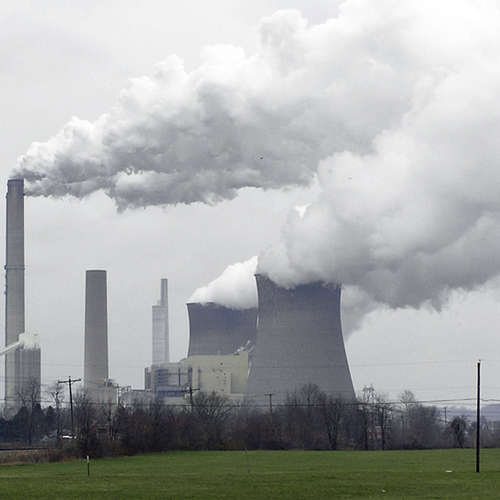
Image Credit: Peabody Energy / Wikimedia Commons
Although blamed for a variety of environmental ills, coal remains an important source of revenue for the U.S. government through bonus and royalty payments from the companies that mine it on federally owned land. Earnings, however, fall well short of what’s required by law, according to a report from Headwaters Economics.
Researchers for the nonprofit research group said that U.S. taxpayers may have been shortchanged by roughly $850 million between 2008 and 2012 because payments from mine operators were well below statutory requirements, averaging an effective royalty rate of 4.9% of the value of the coal instead of the 12.3% required by law. Bonuses paid at the time leases are awarded provided an extra 1.7%.
The federal government owns about one-third of total coal reserves in the U.S., and the bonus and royalty payments on mineral extractions from public lands and waters are the largest non-tax source of income for the U.S. Treasury, the report says.
“Despite the importance of this revenue stream,” the report’s authors said, “little information is available to describe accurately the return to the public from taxation of federal coal resources.”
The program administered by the Bureau of Land Management (BLM) and the Office of Natural Resources Revenues (ONRR) is intended to create jobs and economic development and also guarantee a fair return for taxpayers.
There are at least three problems with the current system, according to the report:
- Royalty rates applied to each lease, and the prices used to calculate the royalties owed to the government, “are all considered proprietary and data are withheld.” In other words, no one would seem to know whether the correct royalties are being paid.
- Administration costs are high.
- Valuation procedures may be unfair. The ONRR sets the value of extracted coal at the “first point of sale at or near the mine,” limiting royalties when the coal is re-marketed at higher prices down the line.
Reforms would increase revenues
Changing the way that the coal is valued, from the mine price to the market price, would mean billions of dollars in additional income, the report said.
“Moving the point of valuation would improve transparency,” it says. “Market prices of coal are known. The BLM and the public would have easy access to coal valuation data.”
Further, reform would lower administrative costs, simplify the valuation process, and make it easier to determine what a fair return is.
The report offers three scenarios, ranging from a revenue neutral plan with total collections of $3.9 billion to a system based on the “gross market price” of coal paying a royalty rage of 12% and bringing in $9.5 billion in collections.
Obama administration proposed changes
The U.S. Interior Department recognizes that changes are needed, a recent op-ed piece in The New York Times said, and proposed more oversight of the self-report sales figures from coal companies. The government also is looking at the discounts that are “routinely” applied to payments as well as “noncompetitive lease sales.”
“But the department should not stop there,” wrote David J. Hayes and James H. Stock in the March 24 column. “The federal government should also take into account the economic consequences of burning coal when pricing this fuel. The price for taxpayer-owned coal should reflect, in some measure, the added costs associated with the impacts of greenhouse gas emissions.”
Taxpayers, they note, already are on the hook for the major costs of responding to the effects of global climate change, including rising sea levels, coastal storm surges, damage to forests and the prospect of more droughts.
Hayes and Stack suggested the Interior Department impose a “carbon adder” on coal sales that could be used to help defray the costs of responding to climate change.
“Computing the appropriate carbon adder will not be easy, but that should not deter the Interior Department from accounting for a meaningful portion of coal’s climate impact when updating the federal coal royalty rate,” they wrote. “…The greenhouse gas burden from coal taken from government lands can no longer be ignored.”
Weekly Newsletter
Get building science and energy efficiency advice, plus special offers, in your inbox.















0 Comments
Log in or create an account to post a comment.
Sign up Log in